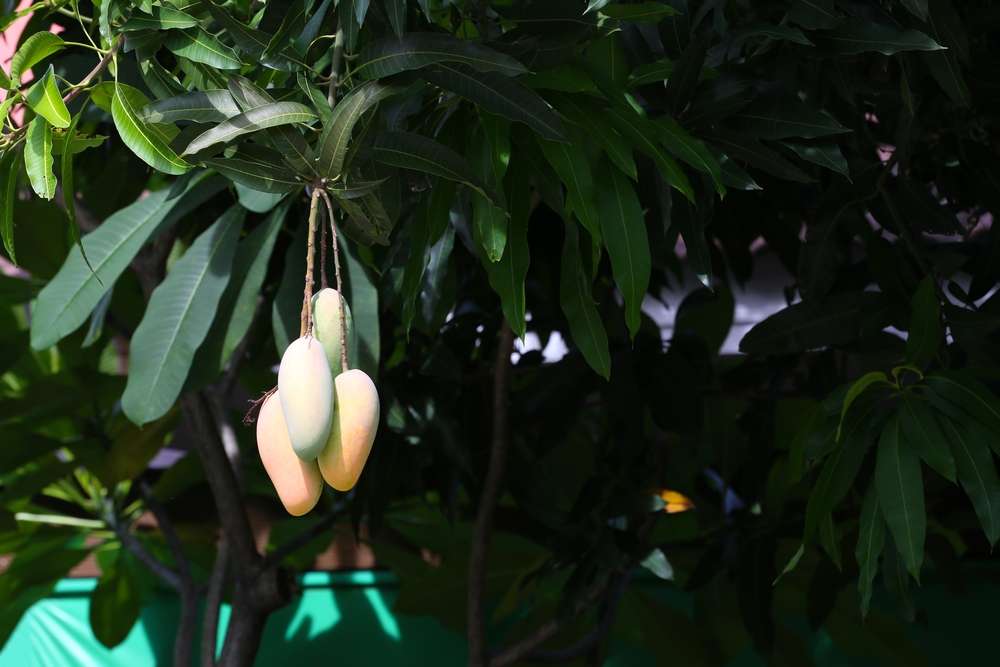The Sweet Science Behind Rainbow Mango
Rainbow mangoes, with their vibrant hues and captivating colors, have become a sensation in the world of tropical fruits. These visually stunning mangoes have piqued the curiosity of fruit enthusiasts and foodies alike. But what makes them so colorful? In this article, we’ll delve into the intriguing science behind rainbow mangoes, exploring the factors that contribute to their remarkable and varied shades.
The Basics of Mango Colors
Before we dive into the unique aspects of rainbow mangoes, it’s essential to understand the natural coloration of mangoes. Typically, mangoes come in shades of green, yellow, and orange. The changing colors signal the ripening stages of the fruit, from an unripe green to a ripe and sweet orange or yellow.
Rainbow mangoes, however, defy these traditional color norms. They exhibit a broad spectrum of colors, ranging from bright reds and purples to deep oranges and yellows. The diversity of colors in these mangoes is a result of a combination of factors.
Varietal Diversity
The most significant factor contributing to the diverse colors of rainbow mangoes is the variety or cultivar of the mango. Different mango cultivars naturally produce a wide range of colors, flavors, and aromas. Some of the popular rainbow mango varieties include the ‘Keitt,’ ‘Ataulfo,’ ‘Carrie,’ ‘Irwin,’ and ‘Mallika.’
Each cultivar has unique characteristics that influence the fruit’s appearance. For example, the ‘Keitt’ mango is renowned for its deep green skin, while the ‘Ataulfo’ mango is known for its golden-yellow, nearly translucent flesh. These distinct cultivars are at the heart of the rainbow mango’s color palette.
Climatic Conditions
Climate plays a significant role in determining the colors of mangoes. The amount of sunlight, temperature, and humidity during the growing season can influence the pigmentation of the mango skin and flesh. In regions with consistent and intense sunlight, mangoes tend to develop more intense reds and purples, leading to a visually striking rainbow effect.
Ripening Process
The ripening process of mangoes is another critical factor in their coloration. Mangoes change color as they ripen, transitioning from green to yellow or orange. In the case of rainbow mangoes, the cultivar-specific ripening process can lead to an array of colors. Some may transition from green to red, while others change from green to purple, creating a beautiful visual spectrum.
Nutrient Content
The nutrient content in the soil also plays a role in determining the color of mangoes. Mango trees that receive a balanced and diverse range of nutrients tend to produce more colorful and vibrant fruit. Nutrients like potassium and iron can influence the intensity of red and purple pigments in mangoes, contributing to their rainbow-like appearance.
The Role of Phytochemicals
The colors in rainbow mango are not only skin-deep; they extend to the flesh and are a result of the presence of various phytochemicals. These compounds are natural antioxidants and pigments found in plants, and they are responsible for the fruit’s diverse and vibrant colors.
Anthocyanins: Rainbow mangoes owe their red and purple hues to the presence of anthocyanins. These water-soluble pigments are found in many fruits and vegetables, and they change color depending on the acidity of the fruit. In the case of mangoes, anthocyanins are responsible for the rich, bold colors seen in some cultivars.
Carotenoids: Carotenoids are responsible for the yellow and orange pigments in mangoes, giving them their classic tropical coloration. While most mangoes exhibit these colors to some extent, rainbow mangoes may have carotenoid profiles that result in deeper, more vibrant shades.
Flavonoids: Flavonoids, another group of phytochemicals, contribute to the diversity of colors in rainbow mango. These compounds can influence the coloration of both the skin and flesh, making some mangoes more visually striking than others.
Culinary and Aesthetic Appeal
The colorful nature of rainbow mangoes not only makes them visually appealing but also adds to their culinary appeal. These mangoes are not only a feast for the eyes but also a treat for the taste buds. Their diverse colors often correspond to unique and nuanced flavor profiles. For instance, a red or purple rainbow mango may have a sweeter and more complex flavor compared to a traditional yellow mango.
Rainbow mangoes also offer exciting possibilities in the kitchen. Their vibrant colors make them ideal for creating stunning fruit salads, smoothie bowls, and dessert presentations. Chefs and food enthusiasts appreciate the aesthetic value that rainbow mangoes bring to their dishes, enhancing both the visual and gustatory experience.
Conclusion
The sweet science behind rainbow mangoes is a captivating journey through the natural world of fruits. The interplay of factors such as varietal diversity, climatic conditions, ripening processes, and phytochemical content results in the wide array of colors that characterize these mangoes. From rich reds and purples to deep oranges and yellows, rainbow mangoes are a testament to the diversity and beauty of nature’s bounty. Whether you’re a fruit connoisseur, a food lover, or simply someone who appreciates the wonders of nature, rainbow mangoes are a true delight. The next time you enjoy a slice of this tropical treasure, you can savor not only its sweetness but also the fascinating science that makes it so colorful.
More articles: India’s Future: A Country on the Rise
